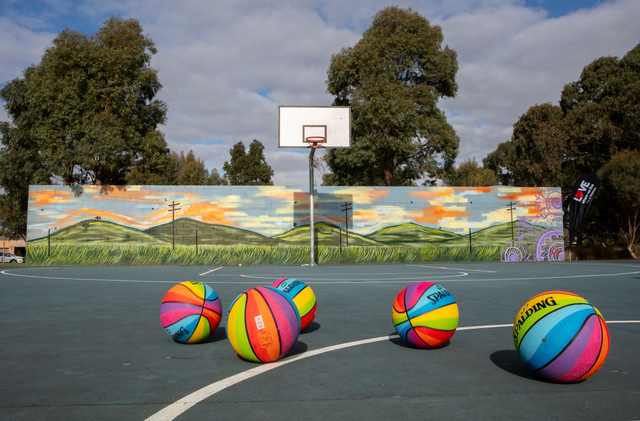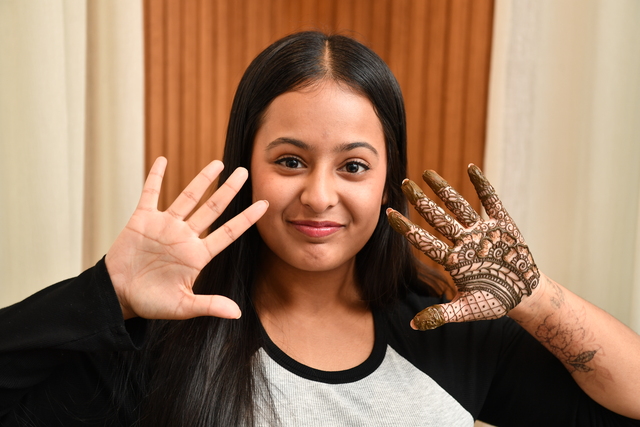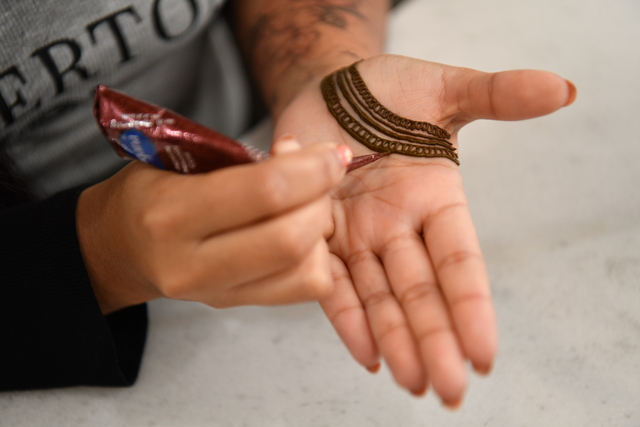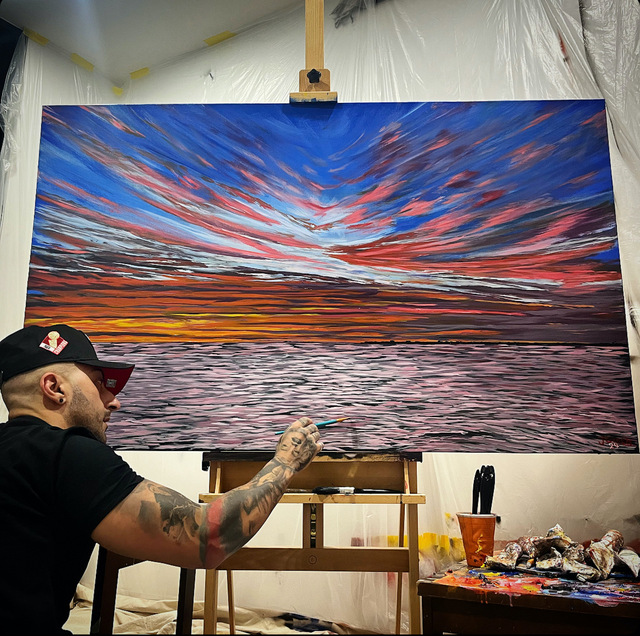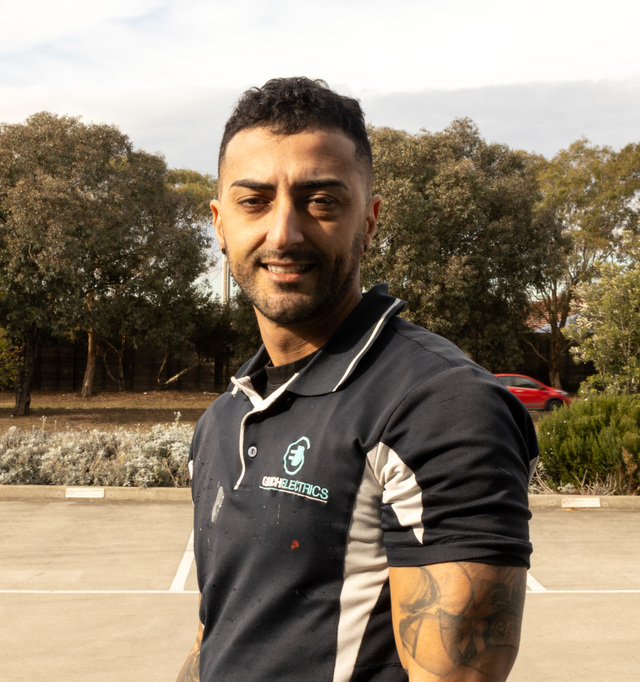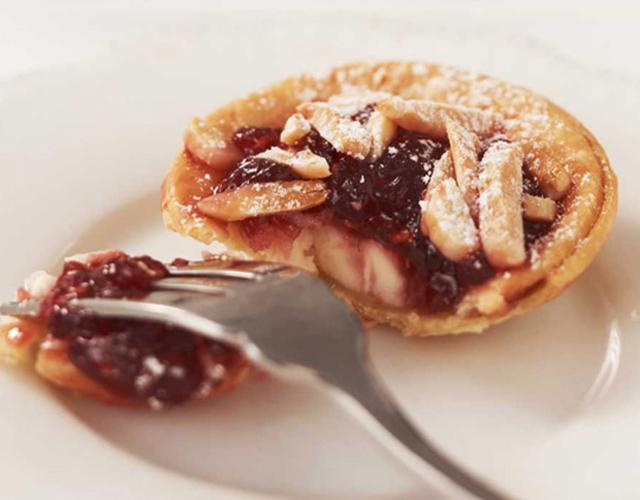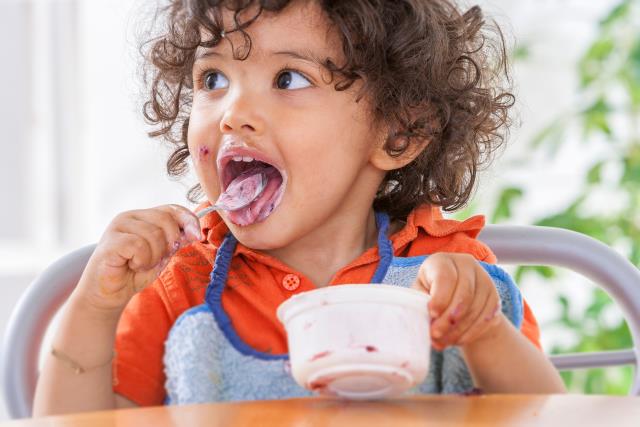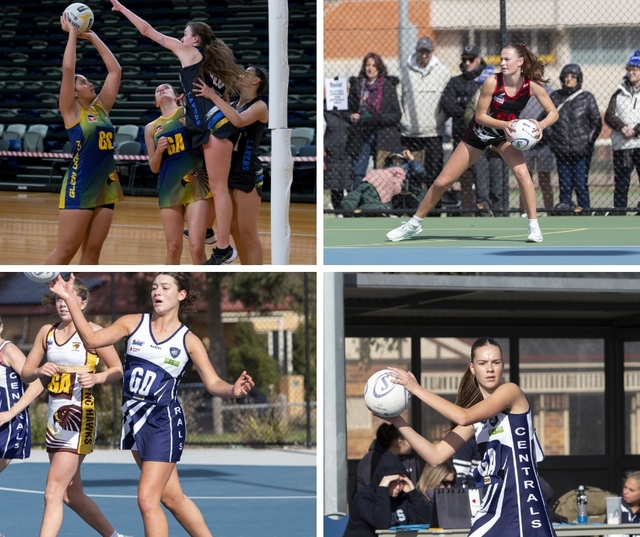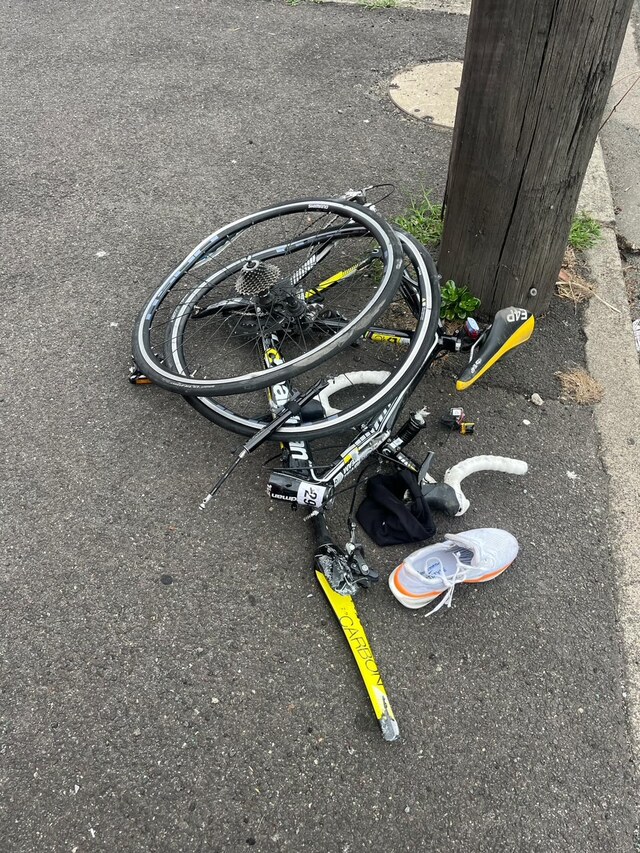Two artists with different styles come together to create a stunning piece of public art. Anne Parisianne delves into their journeys to uncover the inspirations behind their artwork.
In May, Jarrod Grech and Divjot Kaur gathered in Thyme Park, Wollert, to create a mural.
Grech, an established artist, painted a landscape of green mountains illuminated by the light of the sun.
Kaur, an emerging artist and local student, added her purple henna creation to the lefthand side of the painting, infusing the mural with a touch of her style.
The mural, vibrantly spread across the 15 metres by three metres wall behind a basketball hoop, adds serenity to the trees beyond.
Far from being a renegade action or an unlawful act of graffiti, the duo created the mural at the request of the Whittlesea council.
With Grech mentoring, they aimed to promote community connection and pride as part of the council’s Love Where We Live campaign.
Grech said his artistic journey began in early childhood, about the age of five.
Throughout his childhood and teenage years, he drew on and off.
He put his pencils down after year 12 and didn’t pick them up again until 2018.
The death of his best friend drove Grech to draw again.
“After my best mate passed away, I thought I better make something of myself. I thought the only way I can do that is through art,” Grech said.
“I thought I’m gonna make something, the best of what I have, while I’m here.”
Grech has been creating art ever since, with his works taking the form of canvases and murals.
When he started creating again, Grech was motivated to make art for his personal satisfaction.
But seeing the joy that his creations bring people, he realised it’s not about him.
“It’s about bringing joy to people, to the community,” he said.
Grech said he enjoyed creating landscapes, like the one in Thyme Park.
He also likes to portray Australian heroes or legends who have inspired him.
One of his most notable pieces is a tribute to the late cricketer Shane Warne.
Painted on an abandoned building, this mural landed him in court and brought him media attention.
Despite the legal troubles, the court spared him, allowing him to continue his artistic journey.
For Grech, the process of creating a mural is a blend of technology and tradition.
Before putting layers of spray paint on a wall, Grech begins by photographing the wall, finding the image he’d like to create, then using software on his iPad to design the mural digitally.
This allows him to measure and plan each element precisely; to create graffiti, the measurements need to be exact.
Just recently, Grech created another piece featuring a breathtaking scene of a St Kilda sunset, with ombre colours falling into the horizon.
The visual texture appears smooth yet layered, inviting viewers to trace their fingers over the imagined brushstrokes, connecting them to the artist’s intricate process.
Grech shared that the feeling he gets after finishing an artwork is like being on cloud nine.
“The feeling I get is the best feeling in the world. There’s nothing that compares to it,” he said.
“You feel like crying because it feels so good.”
At just 16 years old, Kaur has already made a significant impact with her art. Her design on the mural at Thyme Park wasn’t her first henna artwork.
Henna, a natural dye made from henna leaves, produces temporary tattoos that last from one to three weeks, depending on skin type and care.
It symbolises beauty, cultural tradition and personal expression, often marking significant life events and celebrations.
Women across various cultures and religions– including those from India, Pakistan and Bangladesh– use henna for these purposes.
Kaur’s journey into the world of henna art began during the lockdown when she was just 13.
At the time, she would sit on a dining chair and diligently draw line after line, creating a variety of henna designs on her hands and her mother’s hands.
Now, Kaur designs henna for her female friends, family members, and others who want intricate patterns on their hands.
“When I do (henna), it makes my mum happy, and it makes everyone else happy. So I think, ‘Ok, they enjoy it and I enjoy it, I could do something with it,” Kaur said.
One of her most memorable henna artworks was depicting her parents’ portraits on her mum’s inner wrists as a wedding anniversary gift to her mother, Karnbir Kaur.
The fine lines and detailed work of her parents’ faces on her mum’s hands made the henna designs look almost like photographs.
For the mural at Thyme Park in Wollert, Kaur said the council and the artists decided she should incorporate henna designs on one corner of Grech’s wall painting, as it is an art form she excels in and felt the community could connect with.
“The area where we did the mural has a big population of Asian and Middle Eastern people. So that could be relevant to them, to us,” Kaur said.
For now, Kaur plans to continue her art alongside her academic pursuits.

